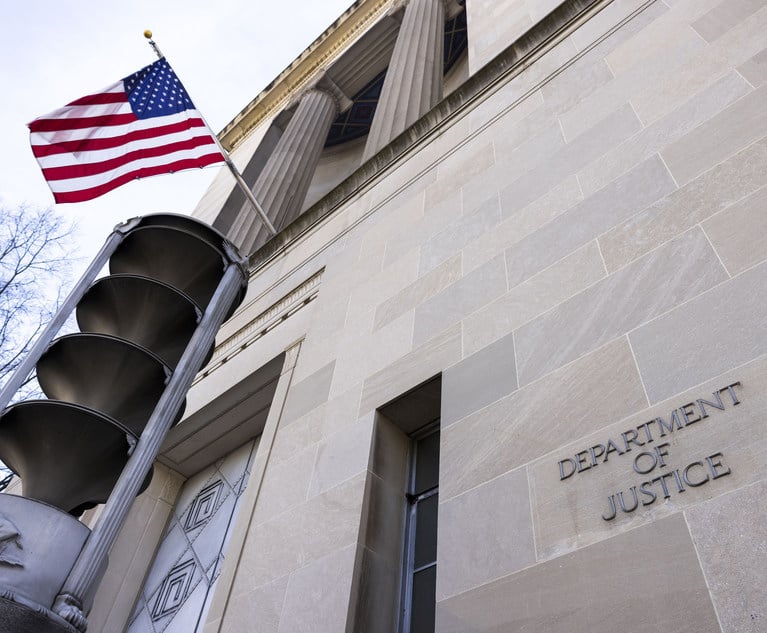 Corinne Ball
Corinne BallSecured Lenders' Interest Does Not Reach Reorganized Equity
In her Distress Mergers and Acquisitions column, Corinne Ball discusses decisions in 'In re MPM Silicones (Momentive)', which are important not only for the most recognized issue of considering the market rate in assessing the rate of interest payable in a cramdown plan, but also for their significant guidance on the importance of contracts and their interplay with the Bankruptcy Code.
December 26, 2018 at 02:53 PM
9 minute read
In In re MPM Silicones (Momentive), the U.S. District Court for the Southern District of New York recently affirmed a 2014 opinion by the U.S. Bankruptcy Court for the Southern District of New York in an intercreditor dispute that may impact the frequency and efficacy of cramdown in future contested plan confirmations under Chapter 11 of the Bankruptcy Code. 518 B.R. 740 (Bankr. S.D.N.Y. 2014), aff'd, 15-CV-2280 NSR, 2018 WL 6324842 (S.D.N.Y. Nov. 30, 2018). Where the secured lenders' liens are continued under a Chapter 11 plan providing the secured lender with a stream of payments having a present value equal to the value of the lenders' collateral, the district court ruled that the secured lenders lien does not extend to the reorganized equity issued under the Chapter 11 plan.
|Background
Momentive's first- and second-lien creditors were parties to an intercreditor agreement that prohibited the exercise of any remedies by the second-lien creditors with respect to the common collateral and its proceeds until the first-lien creditors were paid in full. (The first-lien creditors were joined by 1.5 lien creditors who shared their objections and whose interests were substantially parallel. The two creditors are discussed together in this article.) The debtors' plan of reorganization, which was confirmed over the dissent of the first-lien creditors (the Seniors), provided the second-lien creditors (the Seconds) with replacement notes and reinstated their liens in the collateral. The plan provided the equity issued by the reorganized debtor to the Seconds in discharge of their claims. The Seconds supported the plan by voting in favor of it, joining a restructuring support agreement, and agreeing to backstop a rights offering by the reorganized debtor, raising new capital.
Although the Seniors voted against the plan, the plan was confirmed on a “cramdown” basis with the support of the Seconds. The decision confirming the plan was affirmed on appeal. The Seniors brought suit against the Seconds for breach of the intercreditor agreement. The bankruptcy court dismissed the action against the Seconds and was again affirmed on appeal.
|The Opinions
The Seniors' suit alleged violations of the intercreditor agreement due to the Seconds entering into a restructuring agreement and supporting a “cramdown” plan, as well as accepting fees in exchange for providing a backstop and accepting the reorganized equity before the Seniors were paid in full.
On appeal, the district court addressed many of the arguments unsuccessfully raised by the Seniors before the bankruptcy court. First, the courts examined what rights are conferred or proscribed by the intercreditor agreement, also considering the implied covenant of good faith and fair dealing. Second, and most importantly, both courts considered whether common stock in the reorganized entity constitutes “proceeds of collateral.” The majority of the issues raised by the Seniors were addressed as matters of contract interpretation and existing precedent regarding the extent of the waiver of rights by the Seconds in favor of the Seniors. In contrast, the allegation that the Seconds breached the intercreditor agreement in supporting a cramdown plan opposed by the Seniors was resolved by the bankruptcy court through an analysis of the fundamental responsibilities of a Chapter 11 debtor. This conclusion, as well as what is perhaps the most controversial determination that the Seniors' liens did not extend to the stock of the reorganized debtor as proceeds of collateral, were affirmed.
Does supporting a cramdown plan breach the intercreditor agreement? The bankruptcy court addressed whether the Seconds, in supporting a plan that provided for the confirmation of a plan over the objection of the Seniors on a cramdown basis, breached the Seconds' obligation to refrain from interfering with the Seniors' exercise of remedies against the common collateral. The bankruptcy court recognized that the plan impacted the exercise of remedies by the Seniors, but also observed that the cramdown plan was presented and prosecuted by the debtor, not the Seconds. While the Seniors pointed to the restructuring support agreement as a prohibited interference with the Seniors' exercise of remedies, the bankruptcy court reasoned that the Seconds' actions in support of the plan should be viewed as holding the debtor to an appropriate discharge of its fiduciary duties to unsecured creditors to assure that the Seniors were not overpaid and the rights of unsecured creditors (including the Seconds' unsecured deficiency claim) were protected. Under that analysis the Seconds' action in entering into the restructuring support agreement was not subject to the intercreditor agreement.
Does the equity of the reorganized debtor constitute “proceeds” of collateral? The intercreditor agreement prohibited the Seconds from receiving proceeds of the common collateral before the Seniors were paid in full. Accordingly, the Seniors argued that the Seconds, in accepting the common stock of the reorganized debtor under the Chapter 11 plan, breached the intercreditor agreement because the common stock of the reorganized debtor constituted proceeds of the common collateral.
The bankruptcy court's opinion. Judge Robert Drain rejected this argument by holding that common stock of the reorganized debtor did not constitute “proceeds of collateral.” The Seniors argued that such common stock amounted to “proceeds of collateral” because it was given to the Seconds “on account of” the collateral (or a portion of the collateral, because most of the Seconds' claims were unsecured deficiency claims), or the distribution was in respect of “rights arising out of” the collateral. The bankruptcy court observed that the Seconds were the “fulcrum” security, meaning that the claims of the Seconds exceeded the value of the common collateral, thus leaving the Seconds with a large deficiency or unsecured claim. Significantly, the intercreditor agreement focused on the rights of the Seniors and Seconds in collateral and proceeds of collateral. The intercreditor agreement did not have a definition of “proceeds,” so the court's analysis turned to the definition under the Uniform Commercial Code as implemented in New York.
The bankruptcy court held that common stock did not amount to “proceeds” for a host of reasons. First, the bankruptcy court found that the Seniors' liens and claims against the debtor did not extend to the common stock because the common stock was a distribution on account of the Seconds' largely unsecured claims. The Seniors did not have a lien on the claims of the Seconds and thus were not entitled to claim that the Seniors' security interest extended to the distribution on account of the largely unsecured claim of the Seconds. Next, the bankruptcy court determined that the plan left the collateral and the Seniors' liens on that collateral totally unchanged. Taking an alternative definition of “proceeds,” the bankruptcy court looked for whether the collateral had been transformed, damaged, consumed or exhausted, or, in other words, changed at all. It found that the property constituting the collateral remained the same, that no characteristic of the collateral was changed by the distribution of the stock, and that the collateral was in no way diminished by the issuance of such stock. In short, because there was no change in the collateral, the bankruptcy court concluded that the common stock did not amount to “proceeds.”
The district court's opinion. In affirming the bankruptcy court, the district court adopted the bankruptcy court's reasoning that the distribution of common stock was on account of the Seconds' largely unsecured claims and that the Seniors did not have a lien on the claims of the Seconds. In addition, the district court also concluded that the common stock of the reorganized debtor is not “proceeds of collateral.” The district court read the definition under New York's Uniform Commercial Code and found that the essential characteristics of “proceeds” are that they have to do with an action that exhausted, decreased, diluted, or otherwise used up the collateral.
In their appeal to the district court, the Seniors invoked another provision of the intercreditor agreement that gave the Seniors the exclusive power to enforce rights, exercise remedies and make determinations regarding the release, disposition or restrictions with respect to the collateral. The Seniors argued that this provision precluded the Seconds from acting on their unsecured claims, essentially equating the intercreditor agreement with a waiver by the Seconds of any deficiency claim and thus providing the Seniors with control over the liens and claims of the Seconds. The district court dismissed this argument as a “weak attempt at [a] shell game,” stating that “[it] cannot nullify foundational provisions of the Bankruptcy Code to prop an illogical reading of the [intercreditor agreement].” The district court found “it clear beyond a doubt that proceeds was never intended to—and as a matter of economics cannot—refer to the reorganized common stock that the Seconds received in lieu of giving up their liens to the Common Collateral and restructuring their swath of unsecured debt.”
|Conclusion and Takeaways
The legacy of Momentive should provide sorely needed guidance to the distressed investing community. The Momentive decisions are important not only for the most recognized issue of considering the market rate in assessing the rate of interest payable in a cramdown plan, but also for their significant guidance on the importance of contracts and their interplay with the Bankruptcy Code. There is a fundamental tension between achieving a “silent second” lien and maintaining rights as an unsecured creditor. Hence it is important to focus on the extent of waiver of rights by the junior lienors. Many of the issues raised and ultimately lost by the Seniors could be resolved by careful drafting, although with certain exceptions. For instance, it is not clear that the waiver sought from the holders of a silent second lien can function as a grant of a security interest in the claims of the junior lienor. Perhaps subordination of claims might yield a different result.
In addition, this decision is significant because it navigates from the important position held by the “fulcrum” security, and serves as a reminder of the fundamental precepts of the Bankruptcy Code. First, the debtor in possession has fiduciary duties which, by definition, reside outside a prepetition intercreditor contract. Secondly, it raises as a continuing question: What is the extent of a prepetition lien? The construction of proceeds as a concept that must derive from a change or diminution in collateral sets limits on the rights of secured lenders, yet respects their entitlement to the value of their collateral. Such rationale also arguably stakes out a position on whether secured lenders are entitled to reorganization value, another hotly debated topic among bankruptcy scholars and practitioners.
Corinne Ball is a partner at Jones Day.
This content has been archived. It is available through our partners, LexisNexis® and Bloomberg Law.
To view this content, please continue to their sites.
Not a Lexis Subscriber?
Subscribe Now
Not a Bloomberg Law Subscriber?
Subscribe Now
NOT FOR REPRINT
© 2024 ALM Global, LLC, All Rights Reserved. Request academic re-use from www.copyright.com. All other uses, submit a request to [email protected]. For more information visit Asset & Logo Licensing.
You Might Like
View All
'So Many Firms' Have Yet to Announce Associate Bonuses, Underlining Big Law's Uneven Approach
5 minute read
Tik Tok’s ‘Blackout Challenge’ Confronts the Limits of CDA Section 230 Immunity
6 minute read
Enemy of the State: Foreign Sovereign Immunity and Criminal Prosecutions after ‘Halkbank’
10 minute read
Government Attorneys Are Flooding the Job Market, But Is There Room in Big Law?
4 minute readTrending Stories
- 1Trailblazing Broward Judge Retires; Legacy Includes Bush v. Gore
- 2Federal Judge Named in Lawsuit Over Underage Drinking Party at His California Home
- 3'Almost an Arms Race': California Law Firms Scooped Up Lateral Talent by the Handful in 2024
- 4Pittsburgh Judge Rules Loan Company's Online Arbitration Agreement Unenforceable
- 5As a New Year Dawns, the Value of Florida’s Revised Mediation Laws Comes Into Greater Focus
Who Got The Work
Michael G. Bongiorno, Andrew Scott Dulberg and Elizabeth E. Driscoll from Wilmer Cutler Pickering Hale and Dorr have stepped in to represent Symbotic Inc., an A.I.-enabled technology platform that focuses on increasing supply chain efficiency, and other defendants in a pending shareholder derivative lawsuit. The case, filed Oct. 2 in Massachusetts District Court by the Brown Law Firm on behalf of Stephen Austen, accuses certain officers and directors of misleading investors in regard to Symbotic's potential for margin growth by failing to disclose that the company was not equipped to timely deploy its systems or manage expenses through project delays. The case, assigned to U.S. District Judge Nathaniel M. Gorton, is 1:24-cv-12522, Austen v. Cohen et al.
Who Got The Work
Edmund Polubinski and Marie Killmond of Davis Polk & Wardwell have entered appearances for data platform software development company MongoDB and other defendants in a pending shareholder derivative lawsuit. The action, filed Oct. 7 in New York Southern District Court by the Brown Law Firm, accuses the company's directors and/or officers of falsely expressing confidence in the company’s restructuring of its sales incentive plan and downplaying the severity of decreases in its upfront commitments. The case is 1:24-cv-07594, Roy v. Ittycheria et al.
Who Got The Work
Amy O. Bruchs and Kurt F. Ellison of Michael Best & Friedrich have entered appearances for Epic Systems Corp. in a pending employment discrimination lawsuit. The suit was filed Sept. 7 in Wisconsin Western District Court by Levine Eisberner LLC and Siri & Glimstad on behalf of a project manager who claims that he was wrongfully terminated after applying for a religious exemption to the defendant's COVID-19 vaccine mandate. The case, assigned to U.S. Magistrate Judge Anita Marie Boor, is 3:24-cv-00630, Secker, Nathan v. Epic Systems Corporation.
Who Got The Work
David X. Sullivan, Thomas J. Finn and Gregory A. Hall from McCarter & English have entered appearances for Sunrun Installation Services in a pending civil rights lawsuit. The complaint was filed Sept. 4 in Connecticut District Court by attorney Robert M. Berke on behalf of former employee George Edward Steins, who was arrested and charged with employing an unregistered home improvement salesperson. The complaint alleges that had Sunrun informed the Connecticut Department of Consumer Protection that the plaintiff's employment had ended in 2017 and that he no longer held Sunrun's home improvement contractor license, he would not have been hit with charges, which were dismissed in May 2024. The case, assigned to U.S. District Judge Jeffrey A. Meyer, is 3:24-cv-01423, Steins v. Sunrun, Inc. et al.
Who Got The Work
Greenberg Traurig shareholder Joshua L. Raskin has entered an appearance for boohoo.com UK Ltd. in a pending patent infringement lawsuit. The suit, filed Sept. 3 in Texas Eastern District Court by Rozier Hardt McDonough on behalf of Alto Dynamics, asserts five patents related to an online shopping platform. The case, assigned to U.S. District Judge Rodney Gilstrap, is 2:24-cv-00719, Alto Dynamics, LLC v. boohoo.com UK Limited.
Featured Firms
Law Offices of Gary Martin Hays & Associates, P.C.
(470) 294-1674
Law Offices of Mark E. Salomone
(857) 444-6468
Smith & Hassler
(713) 739-1250






